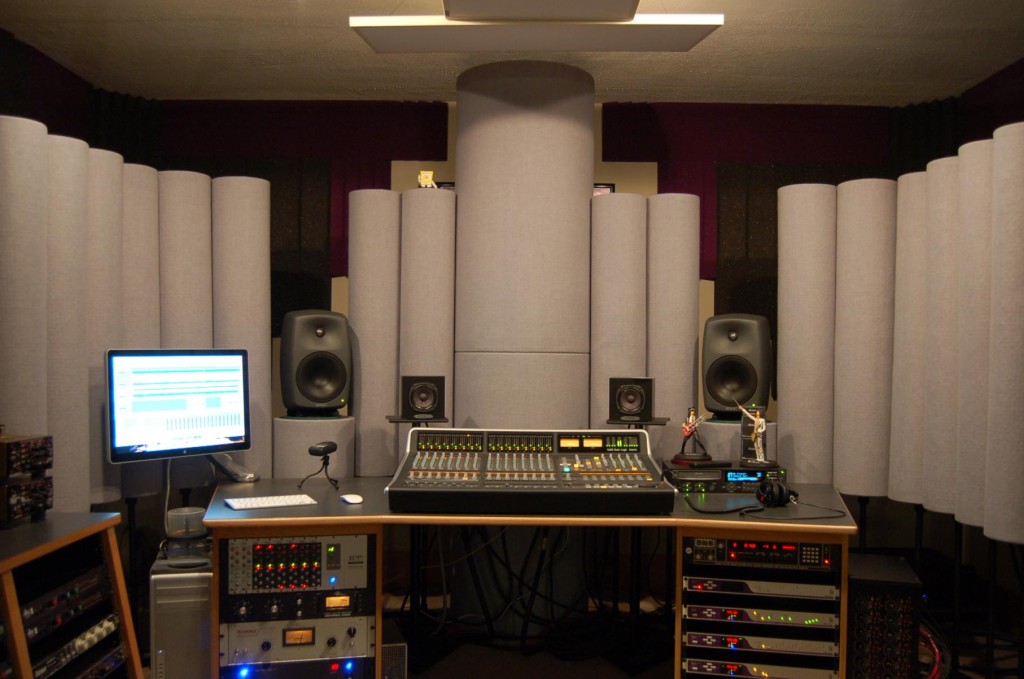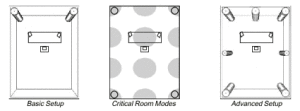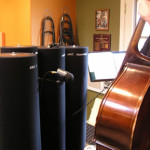
Tube traps are beneficial for any recording, mixing, mastering, or high-end listening room or studio. In this DIY video, you’ll go step-by-step through building your own tube trap, which will save you money and time. These are hands down the best acoustic treatment you can make, transforming nearly any room into a professional studio space.
What are Tube Traps?
A tube trap is equal parts absorption and diffusion, creating a new dynamic called “active absorption.” As frequencies come in contact with the tube trap, they either get absorbed by the outer ring of fiberglass or get scattered back into the room. Some stronger frequencies make their way inside the tube where they bounce and reflect around the inner tube, getting absorbed by the insulation inside.
Placement
 Commonly, tube traps will sit in any and all corners of a room. They are columns so they help block the 90 degree angle in each corner. Usually, each tube trap will come to within 1-2 feet of the ceiling. (For example, a 6 foot tube trap for a 7-8 foot ceiling). These plans are for tube traps that stand 3 feet tall, but they are stackable to reach a 6 foot height.
Commonly, tube traps will sit in any and all corners of a room. They are columns so they help block the 90 degree angle in each corner. Usually, each tube trap will come to within 1-2 feet of the ceiling. (For example, a 6 foot tube trap for a 7-8 foot ceiling). These plans are for tube traps that stand 3 feet tall, but they are stackable to reach a 6 foot height.
You may also line your tube traps against any blank wall in a room, cutting down on direct reflections. If you are recording and looking for more isolation, tube traps make a great barrier between microphones in a room. Since these are both absorption and diffusion, they will help almost anywhere in your room.
Absorption And Diffusion
 The way these traps are built, one half of them is exposed insulation for absorption while the other half is covered with paper for a rounded diffusion surface. (Diffusion basically means that it scatters any frequencies that hit it so there are no direct reflections and it actually makes your space sound a little larger). When placing your tube traps around your studio, you want the back of your tube trap (the diffusion side) to be facing the wall, leaving the front of the tube trap (absorption side) to be facing the room.
The way these traps are built, one half of them is exposed insulation for absorption while the other half is covered with paper for a rounded diffusion surface. (Diffusion basically means that it scatters any frequencies that hit it so there are no direct reflections and it actually makes your space sound a little larger). When placing your tube traps around your studio, you want the back of your tube trap (the diffusion side) to be facing the wall, leaving the front of the tube trap (absorption side) to be facing the room.
